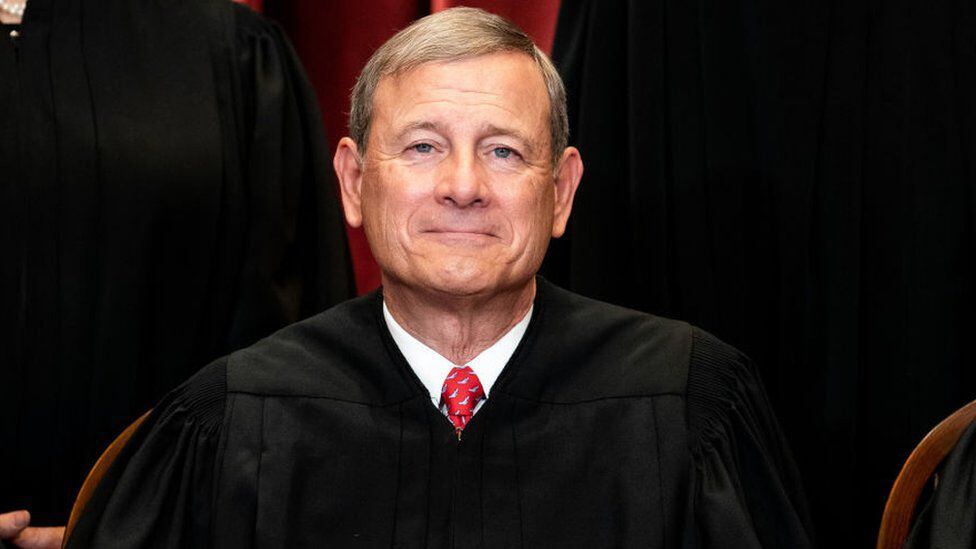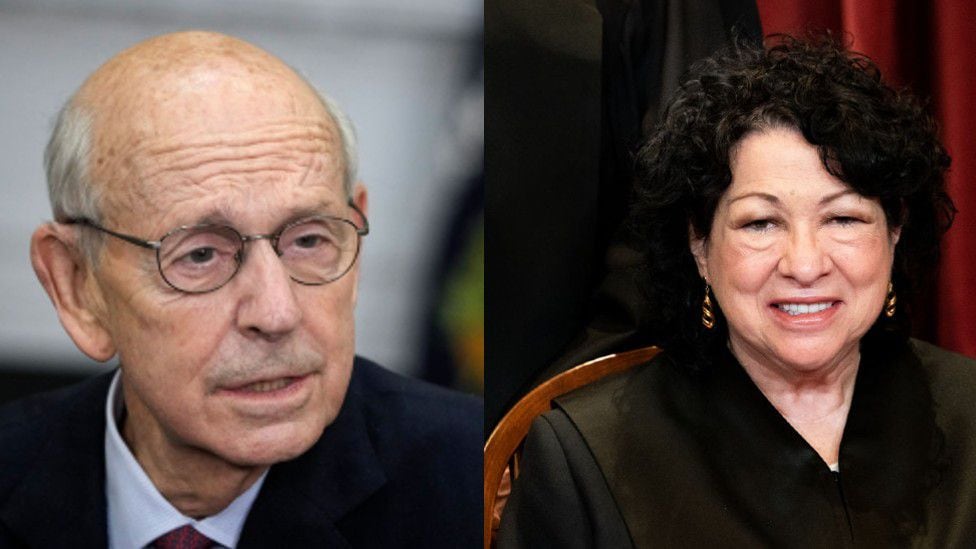What does the ruling say that eliminated the constitutional right to abortion in USA?
This Friday the US Supreme Court of Justice made public its decision to repeal the precedent of 50 years ago, a decisive case for the future of the right to abortion in the country.
Look: Abortion in the United States: where will it be prohibited or restricted to terminate pregnancy in the country?
In the 213-page text, the judges present the decision, with its appendices, as well as the positions for and against.
At BBC Mundo we share the most important points of said sentence.
The decision
The Court made a decision in Dobbs v. the Jackson Women’s Health Organization.
The Jackson organization sought to overturn a Mississippi state law that prohibits abortion after 15 weeks of pregnancy (three and a half months) unless it is a medical emergency or there is a severe fetal abnormality.
That is, Jackson sought to make it possible in Mississippi to abort at any time during pregnancy. His main argument was that said law violated the Court’s precedents that establish that abortion is a constitutional right (Roe vs. Wade case).
The Court’s decision was in favor of the Mississippi law on a 6-3 vote. Most importantly, by ruling in favor of the state, the conservative-majority Court effectively ended the constitutional right to abortion.
This is because it annuls two key rulings that protected access to abortion: Roe vs. Wade, 1973, and Planned Parenthood v. Casey, from 1992.
The position in favor
The opinion of the Court was written by Judge Samuel Alitowho said that abortion “presents a profound moral problem about which Americans have very opposing views.”
And he went on to say that the Constitution does not mention abortion as a right and does not guarantee it through the broader right to liberty.
In the 79-page text, he refers to the vision of abortion before 1973, when the Roe sentence was handed down:
“Not only was there no support for such a constitutional right until shortly before Roe, but abortion had long been a crime in every state.
“Under common law, abortion was a crime in at least some stages of pregnancy and was considered illegal and could have very serious consequences at all stages.
“American law followed common law until a wave of legal restrictions in the 19th century expanded criminal liability for abortions. At the time of the adoption of the Fourteenth Amendment, three-fourths of the states had made abortion a crime at any stage of pregnancy, and the remaining states would soon follow.
And hence he considers that the Roe ruling “ignored or misrepresented this history,” while the Casey ruling “refused to reconsider Roe’s flawed historical analysis.”
The latter is also related to the stare decision which means “to stand by” and which refers to the idea that courts should not overturn prior precedent unless there is a compelling reason to do so.
Which was crucial in this case because it supported, in part, the demand to uphold the Roe and Casey sentencing decision.
But although Alito recognizes in his text the importance of stare decision when he says that it “plays an important role and protects the interests of those who have acted based on a past decision”, and that it “reduces the incentives to challenge established precedents, saving the parties and the courts the cost of endless new litigation” , finally concludes that “it is not an inexorable order” and that “some of the most important constitutional decisions of the Court have invalidated previous precedents”.
Like him, four more judges were in favor: Neil Gorsuch, Brett Kavanaugh, Amy Coney Barrett and Clarence Thomas, although the latter wrote a separate clarification.
partially in favor
Clarence Thomas makes clear in his text that while he agreed with the decision to uphold the Mississippi law, he would have done so without formally overturning the Roe and Casey rulings.

Part of his argument says that “by adhering to a simple and yet fundamental principle of judicial restraint: if it is not necessary to decide more to dispose of a case, then it is necessary not to decide more. We may not always be perfect in following that mandate, and there are certainly cases that warrant an exception. But this is not one of them.”
“The opinion of the Court is thoughtful and thorough, but those virtues cannot compensate for the fact that its dramatic and consequential pronouncement is unnecessary to decide the case at hand”
The position against
The three justices who disagreed with the majority are Stephen Breyer, Sonia Sotomayor and Elena Kagan.
They wrote a 65-page joint text that includes appendices, in which they express their disagreement in leaving the issue of abortion to the decision of the states
They warned that the majority “tries to hide the geographical expansion” of the decision that “allows each State to deal with abortion as it pleases”, as it is a “cold consolation” for that poor woman who “cannot get the money to fly to a distant state for a procedure”.

“Above all, women who lack financial resources will suffer today’s decision. In any case, interstate restrictions will also be in the offing.”
“After this decision, some states may prevent women from traveling out of state to obtain abortions, or even to receive abortion medications from out of state.”
“Some may criminalize efforts, including the provision of information or funding, to help women gain access to abortion services in other states.”
“Most ominous of all, there is no language in today’s decision that would prevent the federal government from banning abortions nationwide, once again from the moment of conception and with no exceptions for rape or incest.”
In addition, they warn that “a woman’s challenge will be to finance a trip, not to New York.” [o] California, but to Toronto (Canada)”.
And that “whatever the scope of the next laws,” they concluded, “one result of today’s decision is certain: the reduction of women’s rights and their status as free and equal citizens.”
Source: Elcomercio
I, Ronald Payne, am a journalist and author who dedicated his life to telling the stories that need to be said. I have over 7 years of experience as a reporter and editor, covering everything from politics to business to crime.

:quality(75)/cloudfront-us-east-1.images.arcpublishing.com/elcomercio/GE4TAMJNGA3C2MRVKQYDAORRHE.jpg)



:quality(75)/cloudfront-us-east-1.images.arcpublishing.com/elcomercio/MYTLUZLMGJEWBLDKIYPDHE5C6Q.jpg)
:quality(75)/cloudfront-us-east-1.images.arcpublishing.com/elcomercio/UZB52HDUMNDFVMAJO32PF4MAAA.jpg)
